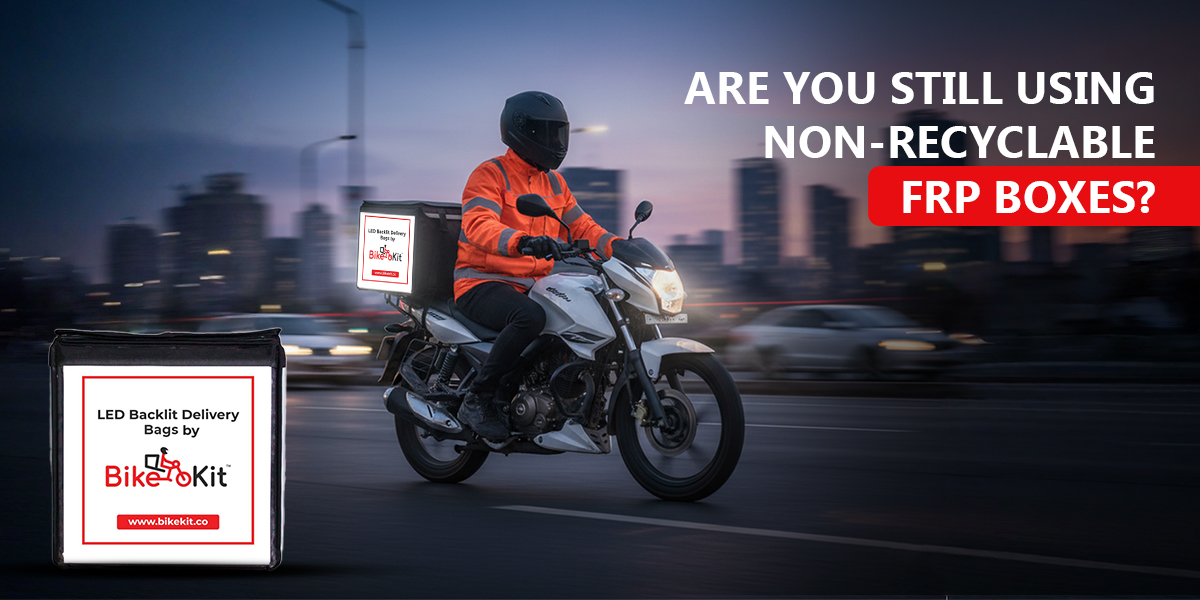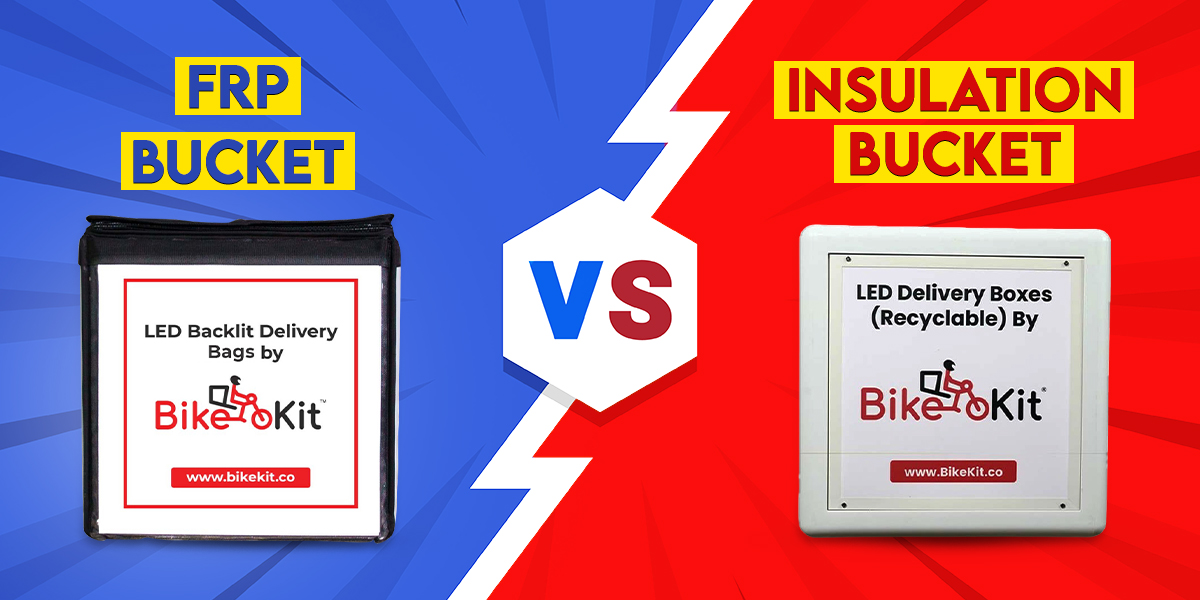Addressing the growing need for sustainable practices, BikeKit offers LLDPE boxes – a recyclable alternative to harmful and toxic FRP boxes that enable Last Mile delivery firms to minimize their environmental impact. Below is a compelling narrative and content showcasing why LLDPE is the future, and FRP (Fiber Reinforced Plastic) is a liability, particularly for large fleets like those with 10,000+ bikes.
FRP V/s LLDPE: The Sustainability Perspective
The Challenges with FRP
1. Non-recyclable and Environmentally Harmful:
- FRP is non-recyclable due to its composite structure of glass fiber and resin, making it impossible to reprocess or reuse.
- Once discarded, FRP contributes to landfills and environmental pollution, taking hundreds of years to degrade.
2. High Carbon Footprint:
- Manufacturing FRP involves energy-intensive processes and the use of toxic resins, resulting in a high carbon footprint.
- For a fleet of 10,000 bikes, using FRP boxes contributes to tens of thousands of tons of CO₂ emissions annually.
3. Short Lifespan:
- FRP boxes are prone to cracks, brittleness, and fiber breakage, leading to frequent replacements.
- This creates additional waste and increases operational costs.
4. Toxic Waste:
- Disposal of FRP often leads to the release of toxic chemicals that contaminate both soil and water.
- Delivery companies using FRP contribute to ecological harm and a negative environmental impact.
Toxic Waste Calculation: FRP V/s LLDPE for a Fleet of 10,000 Bikes
Assumptions:
Fleet size: 10,000 bikes.
Box weight: 10 kg per box.
Replacement cycle: Every 2 years.
Impact of Using FRP Boxes:
1. Non-recyclable Waste Generated:
- Replacement every two years means: 10,000 bikes x 10 kg/box is 100,000 kg (100 metric tons) of waste every two years.
- Over 10 years, this results in 500 metric tons of waste.
Waste Impact: 500 metric tons of non-recyclable waste that will sit in landfills for hundreds of years.
2. Carbon Footprint:
- FRP production and disposal have a high carbon footprint due to energy-intensive processes and the use of toxic materials.
- Estimated emissions per box production is 10 kg of CO₂ per box.
- For 10,000 bikes it will be 100,000 kg of CO₂ every replacement cycle.
- Over 10 years (5 cycles), it’ll result in 500 metric tons of CO₂.
Toxic Waste: FRP disposal releases harmful chemicals into soil and water, contributing to pollution and environmental degradation.
LLDPe:
Recyclable and Sustainable:
- LLDPE boxes are 100% recyclable. At the end of their lifecycle, they can be reprocessed into new materials.
- Since the material is recycled, waste generated per cycle is 0 metric tons.
Marketing Message for Sustainability:
FRP boxes are not only harmful to the environment but also costly in the long run. Over 10 years, a fleet of 10,000 bikes using FRP generates 500 metric tons of non-recyclable waste and significant carbon emissions. LLDPE is the sustainable solution with zero waste, lower carbon footprint, and enhanced durability. Choose LLDPE for a greener future and a smarter investment.

.jpg)


